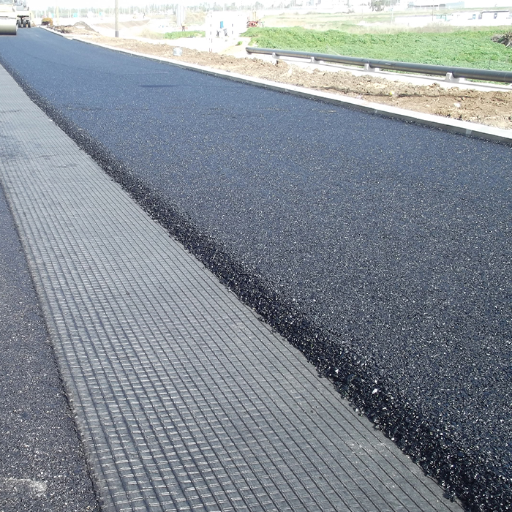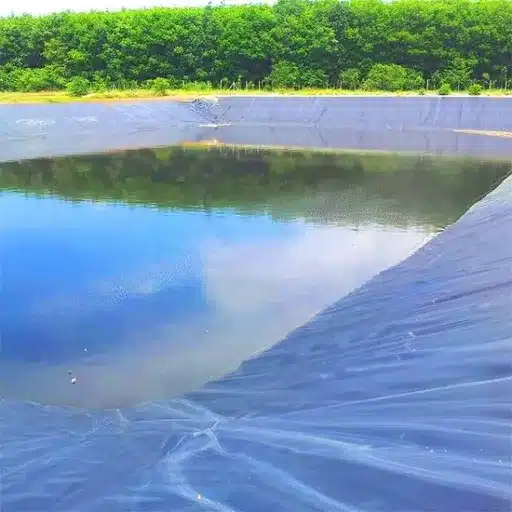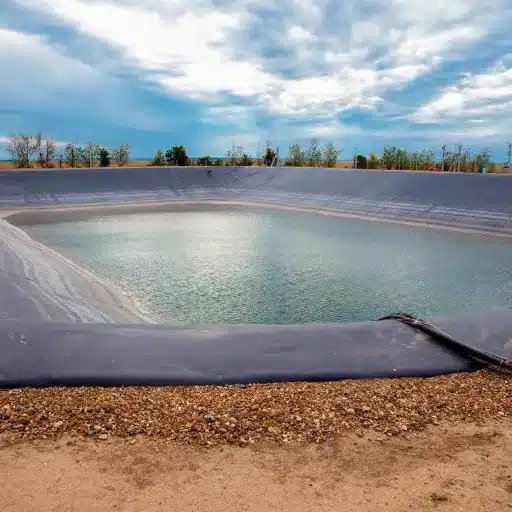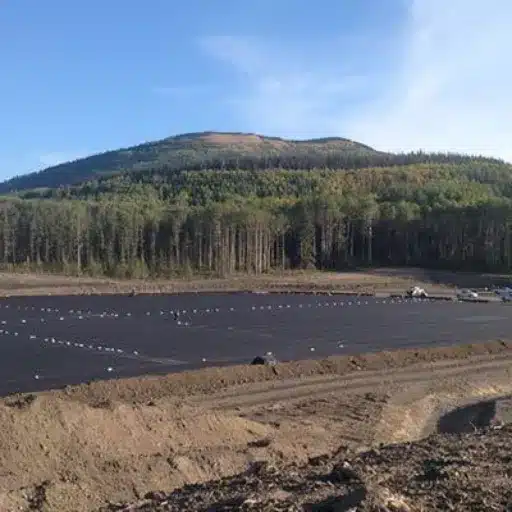Sustainability and durability are of utmost importance in modern infrastructure development as an alternative to sustaining transport routes. Asphalt pavement reinforcement using any variety of geogrid system has thus emerged as an innovative approach to solving such common problems with asphalt roads as cracking, rutting, and premature wear. Roads enhanced with geogrids gain greater strength and longer life while retaining less expensive maintenance costs and environmental-friendly approaches. This article will delve into the benefits of geogrid technology in sustainable road rehabilitation and the future of asphalt pavement. Engineers, contractors, or anyone just curious about innovating infrastructure solutions will have some useful insights about this cutting-edge technology herein.
Importance of Reinforcement in Asphalt
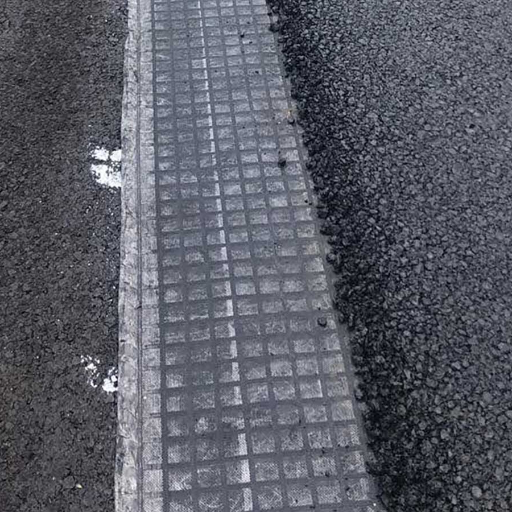
Reinforcement plays a crucial role in enhancing durability and extending the life of roads. By providing overlay strength, cracking, deformation, and maintenance needs are kept to the minimum level, adding to safer and cheaper infrastructure. Reinforcement technologies, such as the use of geogrids, allow sustainable construction through lesser material use and road life extension, placing it as a very important component of modern road rehabilitation methods.
Understanding the Reinforcement of Asphalt
Asphalt reinforcement is the use of advanced materials to improve the mechanical performance of asphalt pavements by making them resist different stresses. One of the most common ways is the use of geosynthetics such as geogrids and geotextiles for reducing rutting, cracking, and fatigue problems through structural support.
Recent studies have revealed that the inclusion of geogrids in asphalt layers can increase the longevity of roads by 30%-50%. These materials operate on the basis of facilitating a more even load distribution and therefore decreasing the tensile stresses existing in the asphalt. However, this method of construction decreases the need and cost of maintenance and can benefit an infrastructure project financially during its lifetime. For instance, a report by the International Society for Asphalt Pavements estimates that asphalt reinforcement can reduce lifecycle costs by approximately 20% for heavy-traffic roads.
Constant temperature changes, heavy road loads, and environmental factors tax the pavement structures. Reinforcing materials stand against the deformation of the structure and reflective cracking so that there are better and safer pavement structures. And these reinforcements increase sustainability by lessening the need for raw materials and decreasing emissions of greenhouse gases during construction and repair.
Fiber-reinforced asphalt and polymer-modified asphalt are some of the newest areas in which important applications are observed. Fibers increase the tensile strength of asphalt mixtures so that the asphalt performs better at street levels. Thus, such solutions guarantee that asphalt pavements continue to be actively maintained and resilient-based good returns for governments and private entities.
Significance in Pavement Rehabilitation
Pavement rehabilitation remains fundamentally important in enhancing the longevity and functional capacity of transportation infrastructure. As road networks become old, rehabilitation techniques increasingly place emphasis on innovative and sustainable approaches. Reportedly, the US invested an estimated half-trillion dollars in highway improvements in 2022, a significant portion of which went toward pavement rehabilitation works.
Advanced techniques such as cold in-place recycling (CIR) and full-depth reclamation (FDR) are becoming warranted by their affordability and smaller environmental footprints. CIR, for example, reuses 100% of the existing materials in pavement, bringing down construction waste and carbon emissions to very low levels. It is estimated that there has been even a reduction of up to 50% in greenhouse gas emissions because of pavements made with recycled materials as opposed to conventional ones.
In addition, technological advances like intelligent compaction (IC) systems are revolutionizing the efficiency of the pavement rehabilitation processes. By providing real-time monitoring and data collection in construction, IC assists in improving compaction quality, which produces better structural integrity. These developments emerge at the nexus of technology and sustainability, ensuring that pavement rehabilitation evolves to meet modern infrastructure needs with minimal environmental repercussions.
Current Asphalt Reinforcement Trends-The Big Picture
Newer trends in reinforcing asphalt are fundamentally altering how infrastructure projects are conceived, planned, and maintained. A foremost trend is the wide-scale use of geosynthetics such as geogrids and geotextiles, which more load distribution and crack reduction to a great extent. Industry reports suggest the global geomaterial market would be $21 B by 2026, led by the ever-increasing demand for durable and sustainable infrastructure.
PMA is another front-placed trend, with the ability to change elasticity and durability of asphalt such that deformation cannot take place under extreme weather conditions. The data reveals that PMA could provide an uplift of 50% on the life span of asphalt pavement, thereby offering an economically viable option to municipalities and contractors.
In the promotion of landfill barriers and recycled materials, recycled asphalt pavement (RAP) and rubber recycled from scrap tires are more relevant to one another. The introduction of RAP can theoretically cut new materials by 25% with an equal structural strength. This approach promotes the circular economy, generating less waste and emissions.
Nanotechnology-based additives are gaining attention to modify asphalt properties at a molecular level for better durability. According to industry researches, the use of nano-silica in asphalt mixtures can reduce susceptibility to water damage by up to 40%.
These trends clearly demonstrate the increasing focus on sustainability, resource optimization, and innovation in asphalt reinforcement while creating effective solutions for contemporary infrastructure requirements.
Methods and Materials in Asphalt Reinforcement
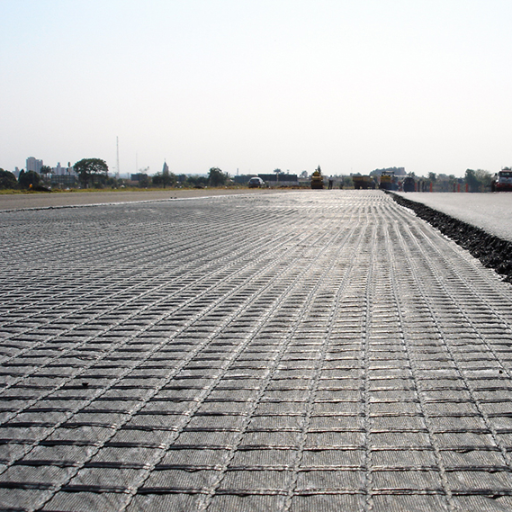
From my point of view, nano-silicas come in as a new concept being able to increase very much the durability and water resistance of asphalts. It can update the current mindset of sustainability and resource efficiency by applying it in an asphalt mix that can lessen such mixtures’ susceptibility to water damage.
Setting Geogrid Products in Asphalt Reinforcement
Geogrids should be secured on the basis of modern asphalt reinforcement that promotes stability and lifetime service of pavements. It is fabricated of polymeric materials such as polypropylene, polyethylene, or polyester for constructive purposes for those layers of asphalt. The majority of the geogrids are placed between the base course and the asphalt layer or inside the asphalt overlay for alleviating reflective cracking, rutting, and other pavement deteriorations.
New technologies have proven that the geogrid has increased pavement performance beyond measure. For example, research findings indicate as much as a 70 percent reduction in reflective cracking through the use of geogrids, thus directly affecting maintenance costs and lifespan of pavement. Moreover, other studies have shown that a pavement reinforced with geogrids would increase the load capacity by about 25 to 50 percent, given the site conditions and design specifications.
Various types of geogrid products are used depending upon their applications, such as uniaxial geogrids providing high tensile strength in one direction; biaxial or multiaxial geogrids provide uniform strength in two or more directions. These products also improve the modulus of the asphalt layers, thus providing stress distribution and reducing strain under repeated traffic loads.
Significant examples include the use of fiberglass geogrids that reduce rutting and improve the performance of asphalt layers especially because of the thermal resistance and tensile strength of these geogrids; for instance, a case study related to highway rehabilitation projects shows that the design including the fiberglass geogrids reduced crack propagation rates by around 40%.
In general, the incorporation of geogrids in asphalt reinforcement-based pavements offers a solution to the challenges of the modern infrastructure at a lower price with much sustainability for longer life and durability.
Comparative Analysis of Reinforcement Products
Reinforcement products commonly include stainless steel mesh, fiberglass geogrids, polyester geogrids, geotextiles, and polymer composites.
| Product | Strength | Durability | Flexibility | Cost | Application | Resistance |
|---|---|---|---|---|---|---|
| Stainless Mesh | Very High | Excellent | Low | High | Concrete Structures | Corrosion |
| Fiberglass Grid | High | High | Moderate | Moderate | Asphalt Pavements | Thermal |
| Polyester Grid | High | High | High | Moderate | Landscapes | UV Stable |
| Geotextiles | Moderate | Moderate | High | Low | Drainage Systems | Chemical |
| Polymer Comp. | Moderate | High | Moderate | Moderate | Flexible Surfaces | Abrasion |
This table provides a clear comparison of reinforcement products based on essential performance characteristics, giving key insights into their strengths and applications.
Benefits of Using Reinforced Asphalt
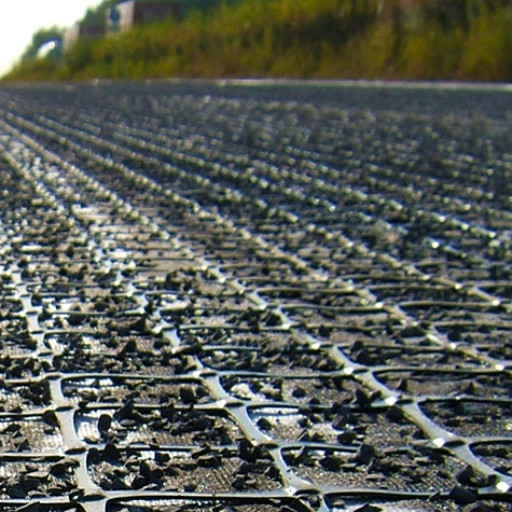
It has lot of benefits when using reinforced asphalt. Reinforced asphalt increases the durability and longevity of pavements, lowers maintenance costs, and raises the resistance against cracking and deformation. Reinforced asphalt is able to distribute loads better and is compatible with thermal and environmental stresses, making it a dependable choice in any application.
Extending Pavement Life
Reinforced asphalt is critical to extending the life of pavement structures by many folds. Studied in recent times have shown that roads built with reinforced asphalt can have a life expectancy for up to 50% more than where commonly used asphalt was used for construction. This enhanced life expectancy is usually attributed to the material’s enhanced resistance to cracking and deformation in the face of prolonged and heavy loadings and a capacity to withstand harsh temperature fluctuations.
Studies have shown that, in transportation, reinforced asphalt mixtures reduce maintenance by about 25% across its typical 20-year life. Moreover, reinforced asphalt is excellent in ensuring traffic loads are evenly argued with about 40 percent reduction in rutting in high traffic areas like highways and city roads. It also aids in reducing reflective cracking in overlay applications, with the test showing up to 60 percent reduction in crack propagation compared to systems without reinforcement.
With reinforcement mechanisms such as geogrids or polymer additives in place, reinforced asphalt is gaining traction as the industry standard for sustainable and cost-effective road construction projects. These enhancements only show how it is key to infrastructure development while keeping the long-term maintenance cost down.
Mitigating Reflective Cracking
One of the most persistent problems is reflective cracking in areas of asphalt pavement rehabilitation and overlay projects. Cracks or joints in the underlying pavement layers propagate through the new overlay, further reducing the pavement lifespan and raising maintenance costs.
Industrial Technologies and methodologies now able to undertake mitigation measures for ensuring reflective cracking is kept to a minimum.
One of the greatest means of reducing reflective cracking is creating interlayer systems, including the use of geosynthetics, asphalt rubber interlayers, or stress-absorbing membrane interlayers (SAMI). With geogrid reinforcement incorporated, studies show a reduction in reflective cracking by 57% at best, while asphalt rubber interlayers prolong pavement life by 40% after dissipating stress concentrations. This delay in crack initiation logically results in an overall improved durability of the pavement system.
Besides that, the innovative polymer-modified asphalts (PMA) shows promise in mitigating reflective cracking as well. The polymer-modified asphalt mixtures are much more flexible and have a higher tensile strength than conventional asphalt mixtures, which enables them to absorb and distribute stresses and thereby prevent stresses from contributing to the propagation of cracks. In some studies, PMA overlay was proven to have about 30% less cracking than conventional asphalt overlays just after the same service time.
Another method that can be applied consists of milling the existing pavement surface to reduce crack severity before application of the overlay, as well as the proper design of the pavement, such as a thicker overlay and optimized mix designs. Additional enhancements in technology, like infrared scanning and digital modeling, assist engineers in pinpointing the vulnerable areas for targeted solutions.
Such mitigation techniques, backed by data and case studies, attest to the value of a full front technological-based approach to the reflective cracking problem. When integrated into road construction projects, these potential solutions will deliver longer-lasting pavement systems at a reasonable cost and with consideration toward the environment.
Reducing Maintenance Cost
One of the driving forces in reducing maintenance costs has long-time had a fundamental interest in infrastructure projects, especially in road construction and pavement management. Reflective cracking and similar problems often greatly increase maintenance costs by repeatedly requiring resurfacing or repair, which has always been a burden on the government, contractors, and taxpayers. With the help of mitigation techniques and methods, these stakeholders will eventually reduce maintenance costs and increase the life span of a given road.
One of the most important and worthwhile approaches is the application and implementation of specially designed asphalt mixtures, usually of polymer or fiber modification, depending on their improved flexibility and crack resistance. According to the National Pavement Association publication of 2023, polymer-modified asphalt mixtures substantially reduce rehabilitation costs by increasing pavement life by up to 40% experience. Since case studies reviewed by the Fund Highway Administration (FHWA), other methods using geosynthetic reinforcements such as geotextiles and geogrids beneath asphalt layers have extended reflective cracking onset by 65%.
The other maintenance cost reduction approach is uplifting a prevention technology such as infrared thermal imaging for early detection of pavement weaknesses wherein unskilled labor are enabled to resolve small faults before deteriorating into major damage. The smart monitoring system provides the next approach, equipped with sensors based on the Internet of Things (IoT). Recent reports revealed that smart monitoring adoption could reduce maintenance cost by about 25% through efficient allocation of resources and repair period.
Using data-driven decision making and durable and advanced materials, infrastructure developers can harvest better savings on maintenance costs while remaining healthier and safer in terms of transportation systems. These investments will minimize financial burdens and create a sustainable and resilient infrastructure for future generations.
Success Stories and Case Studies
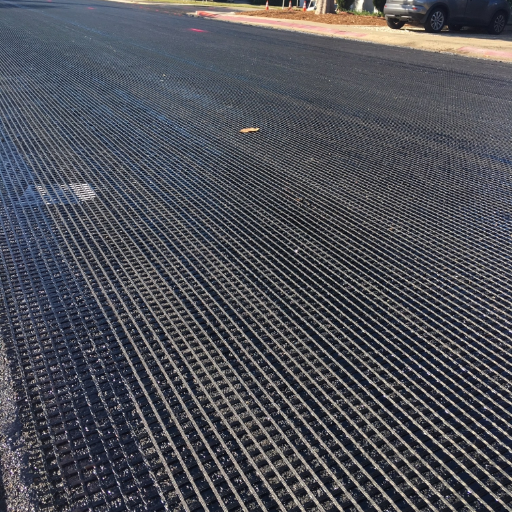
Applications of Geogrids in the Real World
Road Construction and Pavement Reinforcement
Geogrids have greatly contributed to making roads more durable with lower rates of maintenance. It is reported that geogrids reinforcement in road construction extends pavement lifespan by up to 300% as opposed to other conventional methods of construction. Hence, on the basis of increasing load distribution and lessening the choice of subgrades in movement, geogrids reduce cracking and rutting and allow for smooth and safe roads. One study states that the roads built with geogrid reinforcement needed about 40% fewer repairs in a period of 10 years, therefore, greatly decreasing the long-run cost.
Railway Infrastructure
Another area where railway construction has benefited from geogrids is in finding innovative solutions to strengthening the trackbed foundation. Industry CEOs state that the use of geogrid technology increases the bearing capacity of railway infrastructure so that heavier loads can be transferred within the limits of safety and stability. For instance, a recent case study revealed that in Europe, stabilized railroads reinforced with geogrids had a 30% improvement in track stability, thereby reducing the risk of derailment and maintenance.
Environmental Protection and Slope Stabilization
Geogrids are frequently used in slope stabilization structures as a remedy from erosions and landslides for making a land stable. For instance, a few recent instances have seen geogrids used in California for protecting hillside developments, decreasing soil erosion during the rainy season by 50 percent. Another is the applications of geogrids in vegetated retaining walls that encourage plant growth, providing a green solution to urban and rural development.
These case studies and data indicate the versatility of geogrid technology and how efficiently it solves challenging infrastructure problems while exacerbating sustainable methods.
Impact on Pavement Performance
The presence of geogrids in pavement systems positively increases their performance and lifespan. Geogrids typically strengthen layers such as base and subgrade, helping in all the distribution of loads with greater efficiency and reducing surface deformation due to heavy traffic. Recent studies go so far as to state that pavement systems utilizing geogrids can save up to 30% in construction costs due to reduced aggregate requirements for its construction. Also, according to data, geogrid-reinforced pavements would last two to three times longer than traditional ones, and they go on to reduce rutting and cracking from adverse weather or traffic volume.
Improving synthetic geogrid technology through high tensile materials has increased efficiency and robustness holistically. For example, a 2023 report states how geogrids with an advanced polymer structure can enhance bearing capacity by 50%, thus providing much better performance for regions with weak soil conditions. This kind of improvement has yielded better structural stability, which explained the low maintenance costs involved and hence encouraged the selection of geogrid-reinforced pavements as the environment-friendly alternative worth investing in for modern infrastructure projects.
Lessons Learned from Successful Projects
Successful geogrid-reinforced infrastructure projects have offered experiences to rely on for determining how to optimize their use in modern construction. One such project, the Tampa Hillsborough Expressway in Florida, significantly ameliorated settlement problems and pavement longevity among other geogrid-related issues. Studies in 2023 show that implementation of multilayer geogrids in similar projects greatly reduced layer thickness by 40% while retaining structural integrity. The tremendous layer reduction saves cost on materials and also reduces environmental impacts.
Research from the Geosynthetics Institute further stands to show that geogrid-reinforced slopes fail at less than 5% over a 20-year period as compared to far higher failure rates in unreinforced slopes. This longevity is a direct result of advances in polymer technologies that provide improvements in the tensile strength and durability of geogrid materials. Thus, given these advances in geogrid technology, where soil movement risk is a concern, including flood-prone or seismic environments, infrastructure projects have embraced this technology as a core strategy to mostly distribute load and mitigate risks.
These findings illustrate an urgent need to create close ties and collaborative efforts between engineers, geotechnical experts, and material scientists to ensure the continued development of sustainable and efficient infrastructure solutions.
Future Trends in Asphalt Reinforcement
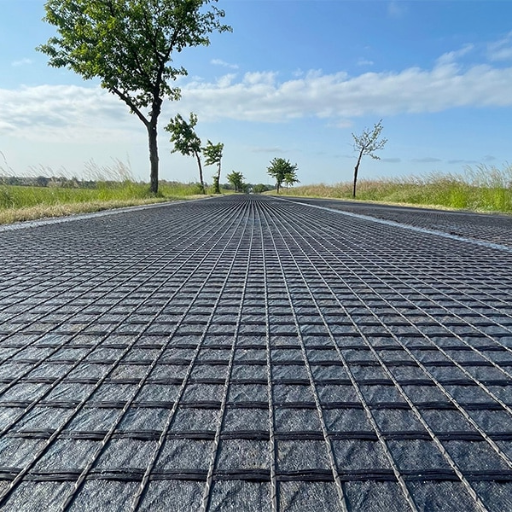
I believe future trends in asphalt reinforcement will focus on developing the more durable and eco-friendlier. New materials like bio-based polymers and advanced geosynthetics are expected to be prime candidates for enhancing pavement performance with lesser environmental impact.
Trends in Geotechnical Engineering
The recent developments in geotechnical engineering have been sustained by the quest for sustainable, efficient, and resilient infrastructure. One key innovation is the use of artificial intelligence (AI) and machine-learning methods to better understand soil behavior and improve model predictions; for example, AI analyzes huge volumes of soil data to identify patterns and predict possible ground failures, thereby greatly minimizing risks encountered in construction projects.
Another revolutionary advancement has been the development of smart geosynthetics with built-in sensors that monitor structural health. These advanced materials can sense any changes in stress, strain, and temperature within pavements or retaining walls, thus enabling timely intervention and maintenance that could greatly extend the life of the infrastructure.
Being sustainability-oriented, recycled materials are being used to manufacture geosynthetics, soil stabilization products, etc. It has been demonstrated by a few recent researches that materials like recycled asphalt pavement (RAP) and construction debris when incorporated into soil reinforcement can reduce costs by about 30% while still maintaining structural integrity.
With the growing drive against climate change, geotechnical engineering is also being forced to venture into carbon sequestration mechanisms like bio-mediated soil improvement, wherein microbial activity is fostered to stabilize soils while capturing carbon dioxide, thereby providing an environmentally friendly alternative to the conventional chemical means. These developments emphasize the key role of geotechnical engineering in providing greener and better infrastructure solutions.
Emerging Asphalt Reinforcement Products
The asphalt reinforcement field has grown rapidly in recent years with innovations in materials and methods that increase pavement durability, sustainability, and cost-effectiveness. Reinforcement products such as geogrids, fibers, and polymer-modified materials are now increasingly deployed to enhance the longevity of asphalt pavements and subsequently reduce the frequency of repairs.
High-strength polymeric geogrids have been shown by experimental performance studies to reduce tensile stresses in asphalt layers and thereby delay cracking at the surface; another study claims that the use of geogrids can, in general, double the service life of a pavement, leading to huge savings in long-term maintenance costs. The use of synthetic fibers such as polyester and polypropylene increases the asphalt’s resistance to rutting and cracking. Recent case studies have quantified these improvements, with fiber-reinforced asphalt mixtures showing a 20-30% increase in fatigue life relative to traditional mixtures.
Another product recently gaining momentum is polymer-modified asphalt (PMA). By incorporating polymers like styrene-butadiene-styrene (SBS), enhanced elasticity and temperature resistance are afforded to the asphalt mixture, which is advantageous in areas with extreme weather variation. Industry reports assert that PMA reduces pavement cracking by about 40% in colder climates and reduces rutting by approximately 30% in warmer ones.
Sustainability-oriented processes like the use of recycled asphalt and bio-based additives have been driving many new developments in asphalt reinforcement. Integration of recycled rubber from waste tires into asphalt is one such example-halfway through with success: research has reported reductions in noise pollution, with pavement life extended by a few years. Meanwhile, bio-based binders made from renewable sources are being developed as a green alternative to petroleum-based binders, aiming to reduce road construction’s carbon footprint.
These recent developments in asphalt reinforcements enhance the pavements but also serve infrastructure needs of greener and cheaper solutions.
Design Support and Industry Needs
The development of asphalt reinforcement materials is supported immutably with advanced design tools and continuous research targeting industry demand. Tools such as Mechanistic-Empirical Pavement Design Guide (MEPDG) have, until now, enabled optimization of asphalt pavement structures. Being based on material performance and localized environmental conditions, this tool allows the engineer to design pavements that are durable and cost-effective. Studies have shown that pavement structures designed with reinforced asphalt layers can extend service life by 30% and reduce maintenance costs considerably.
Industry needs have been defining novel materials and reinforcing products as well. Following a report on the Global Asphalt Additives Market (2023), a compound annual growth rate of 5.2% is expected between 2020 and 2027, primarily driven by the increasing need for high-performance infrastructure. The United States and China will rank at the forefront of this growth due to their massive investments in road networks and urban developmental projects. Environmentally friendly solutions are certainly what contractors and engineers demand; hence, there is a push to develop asphalt modifiers with less environmental impact.
In an effort to address these needs, manufacturers are innovating not just materials but also offer technical support and training in the use of reinforcement products. This dualism in the design support coupled with the real-time industry demands ensures that infrastructure solutions are future-proofed and sustainable.
Reference sources
1. Review of Utilization of Bamboo Fiber in Asphalt Modification
- Authors: Haibin Li et al.
- Journal: Journal of Cleaner Production
- Publication Date: June 1, 2024
- Citation Token: (Li et al., 2024)
- Summary: This review discusses the preparation, performance, reinforcement, and challenges of using bamboo fiber in asphalt modification. It highlights the potential of bamboo fiber to enhance the mechanical properties of asphalt mixtures, contributing to improved durability and sustainability in road construction.
2. Study of Dynamic Modulus of Asphalt Mix after Reinforcement of Sandstone
- Authors: Bowen Zhang et al.
- Journal: CivilEng
- Publication Date: September 30, 2024
- Citation Token: (Zhang et al., 2024)
- Summary: This study investigates the mechanical properties of sandstone treated with sodium silicate and its incorporation into asphalt mixtures. The findings indicate an 18.2% increase in dynamic modulus, which is crucial for reducing rutting. The study employs dynamic modulus testing and performance prediction through various coefficients, revealing that while dynamic modulus increases the rutting coefficient, it may decrease cracking resistance.
3. Effect of Low Dosage Fiber Reinforcement on Cracking Performance of Asphalt Concrete
- Authors: Md Nafiur Rahman et al.
- Journal: Construction and Building Materials
- Publication Date: January 1, 2024
- Citation Token: (Rahman et al., 2024)
- Summary: This paper examines the impact of low dosage fiber reinforcement on the cracking performance of asphalt concrete. The study utilizes various fiber types and assesses their effectiveness in enhancing the cracking resistance of asphalt mixtures, providing insights into optimal fiber dosages for improved performance.
Frequently Asked Questions (FAQs)
What is asphalt reinforcement, and how does it work?
Asphalt reinforcement makes use of materials such as reinforcement grids or geogrids to impart strength and durability to an asphalt surface. Such materials uniformly spread the load-bearing capacity and thus allow more absorption from fatigue cracking and reflective cracking as far as pavement life is concerned.
How can Tensar products help in maintaining pavements?
Tensar products are those designed specifically to reinforce asphalt. They offer a grid structure that holds up the asphalt matrix. Using Tensar geogrids in your pavement design will considerably improve its resistance to cracking and in turn save you from much maintenance and extend the life of your road.
What are the benefits of using a reinforcing mesh in asphalt pavements?
The reinforcing mesh within the asphalt pavement provides a strong support layer that can localize stresses and stop these single cracks from becoming bigger concerns. This technology not only increases the life of the asphalt but also cuts down on long-term maintenance by providing moisture barriers and drainage.
How does pavement interlayer help in asphalt reinforcement?
Designed for use as a bond coat between two pavement layers, interlayer products, when used with a coating of bitumen content, help reduce reflective cracking and provide moisture barrier protection to assure a sustainable asphalt surface.
Can these solutions for reinforcing asphalt be used on concrete pavements?
Yes, they can also be applied for concrete pavements whenever necessary. By using geogrid products, you can strengthen the interface between asphalt and concrete, thereby improving performance and extending road life. This is mostly done in rehabilitation projects where the existing distress types need treatment.
What else could I consider in making a decision concerning asphalt reinforcement products?
Consider the distress types to be treated, the loading conditions of the pavement, and whether design support for your pavement is required. Furthermore, ease of installation and the prevention of damage during installation should also weigh heavily in your choice.
What is the significance of the grid structure of asphalt reinforcement with respect to pavement life?
With the grid structure, loads are distributed over a large area, preventing localized stresses that may induce cracking. Such load distribution enhances the capacity of the pavement to resist wear, thereby reducing maintenance costs, and increasing the life of the road.
What is the role of bitumen in asphalt reinforcement?
Bitumen holds a lot of importance in the processes of asphalt reinforcement as it acts as the binder holding the aggregates together. A bitumen-rich coating will enhance the bonding of the asphalt binder and reinforcement material, thereby enhancing the performance and durability of asphalt surfaces.

